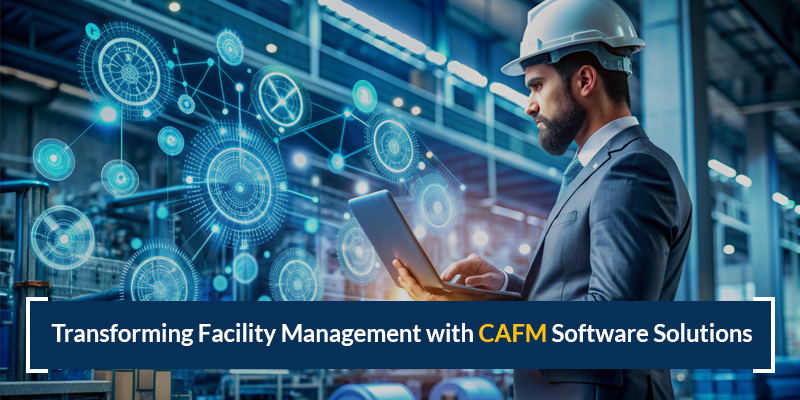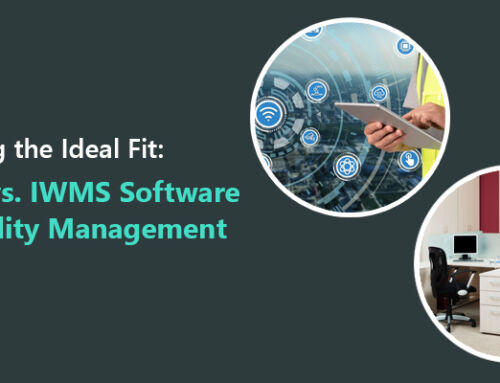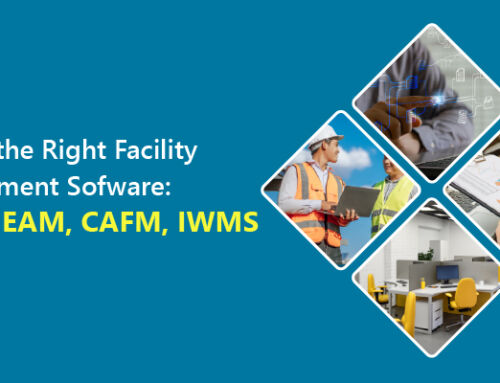The Growing Demand for CAFM Software in Facility Management
Managing facilities efficiently has become increasingly challenging for organizations striving to control costs and enhance productivity. Studies show that poor asset utilization and inefficient workflows can lead to losses amounting to billions annually in the global facility management sector. In fact, operational inefficiencies contribute significantly to maintenance delays and resource wastage. This is where Computer-Aided Facility Management (CAFM) software becomes essential. By integrating various facility management functions into a unified CAFM system, organizations can streamline operations, optimize resources, and enhance overall efficiency.
Understanding CAFM Software: A Comprehensive Overview
CAFM software (Computer-Aided Facility Management software) is an advanced tool designed to integrate and optimize various aspects of facility management. From tracking assets and scheduling maintenance to managing space and monitoring energy consumption, a CAFM system consolidates these functions into one easy-to-use platform. Its ability to provide real-time data and automate workflows ensures facilities operate at maximum efficiency.
Top Features to Look for in a CAFM System
When evaluating a CAFM system, consider these key features to ensure seamless and efficient facility management:
- Asset Management: Tracks the entire lifecycle of assets, schedules preventive maintenance, and minimizes downtime through predictive analytics.
- Space Management: Provides real-time data on occupancy rates, optimizes space utilization, and supports flexible workspace arrangements like hot-desking.
- Energy Monitoring and Sustainability: Tracks energy consumption, identifies inefficiencies, and aligns with sustainability goals by reducing the facility’s carbon footprint.
- Work Order and Maintenance Management: Automates the creation, assignment, and tracking of work orders for routine and emergency maintenance tasks.
- Real-Time Reporting and Analytics: Offers actionable insights into facility performance, enabling data-driven decisions for cost reduction and efficiency improvements.
- Mobile Accessibility: Empowers facility managers with remote access to data and tools, ensuring flexibility and quick response times.
- Integration Capabilities: Seamlessly integrates with existing enterprise systems like ERP, HR, and IoT devices for a unified workflow.
- Compliance and Documentation: Tracks regulatory requirements, generates reports, and ensures facilities meet compliance standards.
These features empower organizations to manage their facilities proactively and effectively.
Key Advantages of Adopting CAFM Software
Implementing CAFM software brings numerous benefits, including:
- Operational Efficiency: Automates routine tasks like work orders and maintenance scheduling, saving time and reducing errors.
- Cost Savings: Identifies underutilized spaces and optimizes resource allocation, significantly reducing operational costs.
- Improved Decision-Making: Real-time data enables managers to make informed decisions about resource allocation and maintenance priorities.
- Enhanced Compliance: Tracks maintenance schedules and documentation, ensuring adherence to industry standards.
- Sustainability Goals: Helps reduce energy consumption and supports eco-friendly facility practices.
How to Evaluate and Select the Right CAFM System
Choosing the right CAFM system involves assessing the specific needs of your organization. Here are some tips:
- Scalability: Ensure the system can grow with your organization’s needs.
- Integration: Look for solutions that integrate seamlessly with existing tools like ERP and HR systems.
- User-Friendliness: Opt for software with an intuitive interface to minimize training time.
- Vendor Support: Choose a provider offering robust customer support and regular updates.
Explore trusted providers like eFACiLiTY® for scalable and adaptable CAFM solutions
Effective Strategies for Implementing CAFM Software
To implement CAFM software successfully, follow these steps:
- Assess Facility Needs: Identify pain points such as high operational costs or inefficient maintenance schedules.
- Define Goals: Set measurable outcomes like cost savings, improved asset utilization, or energy efficiency.
- Train Staff: Ensure employees are familiar with the software’s features to maximize adoption.
- Regular Review: Continuously monitor system performance and make adjustments to optimize results.
The Future of Facility Management Powered by CAFM Systems
The evolution of CAFM systems is driven by emerging technologies like AI, IoT, and predictive analytics. These advancements enable real-time monitoring, automate complex tasks, and support sustainability initiatives. Future-focused CAFM software solutions will also integrate with digital twin technology to provide virtual models of facilities, further enhancing efficiency and decision-making.
By adopting a robust CAFM system, organizations can stay ahead of the curve, ensuring their facilities operate efficiently and sustainably. Learn more about how CAFM can transform your facility here.













